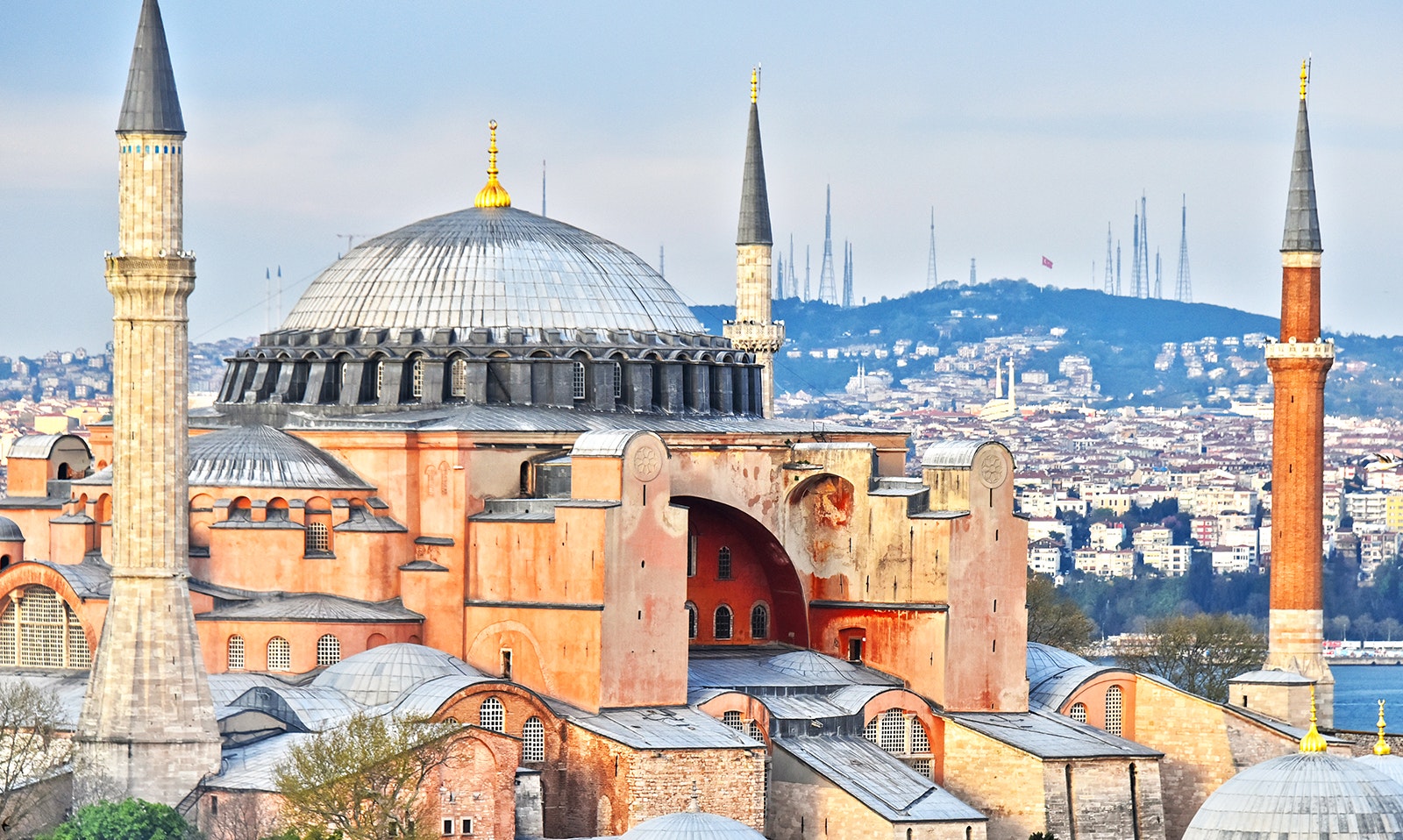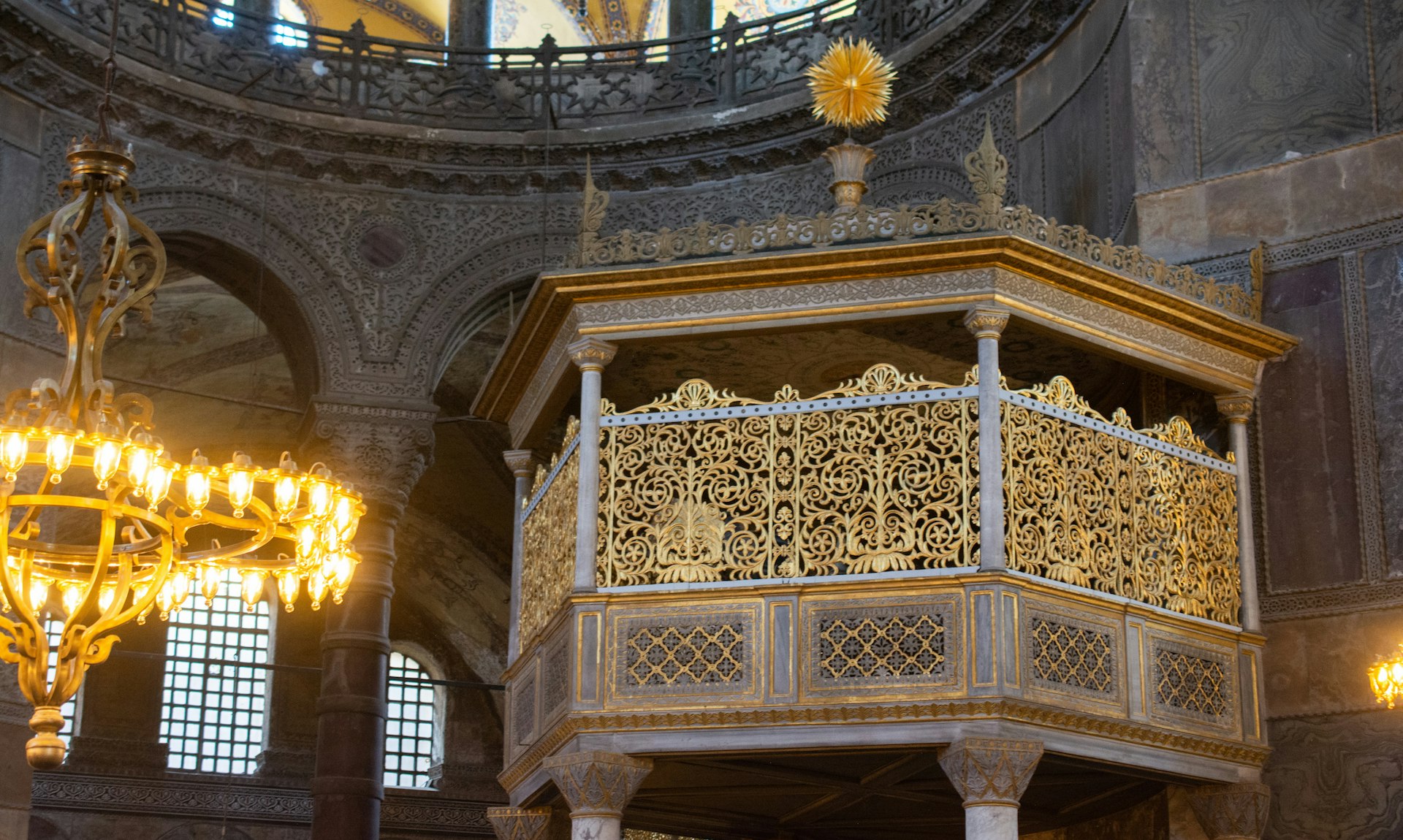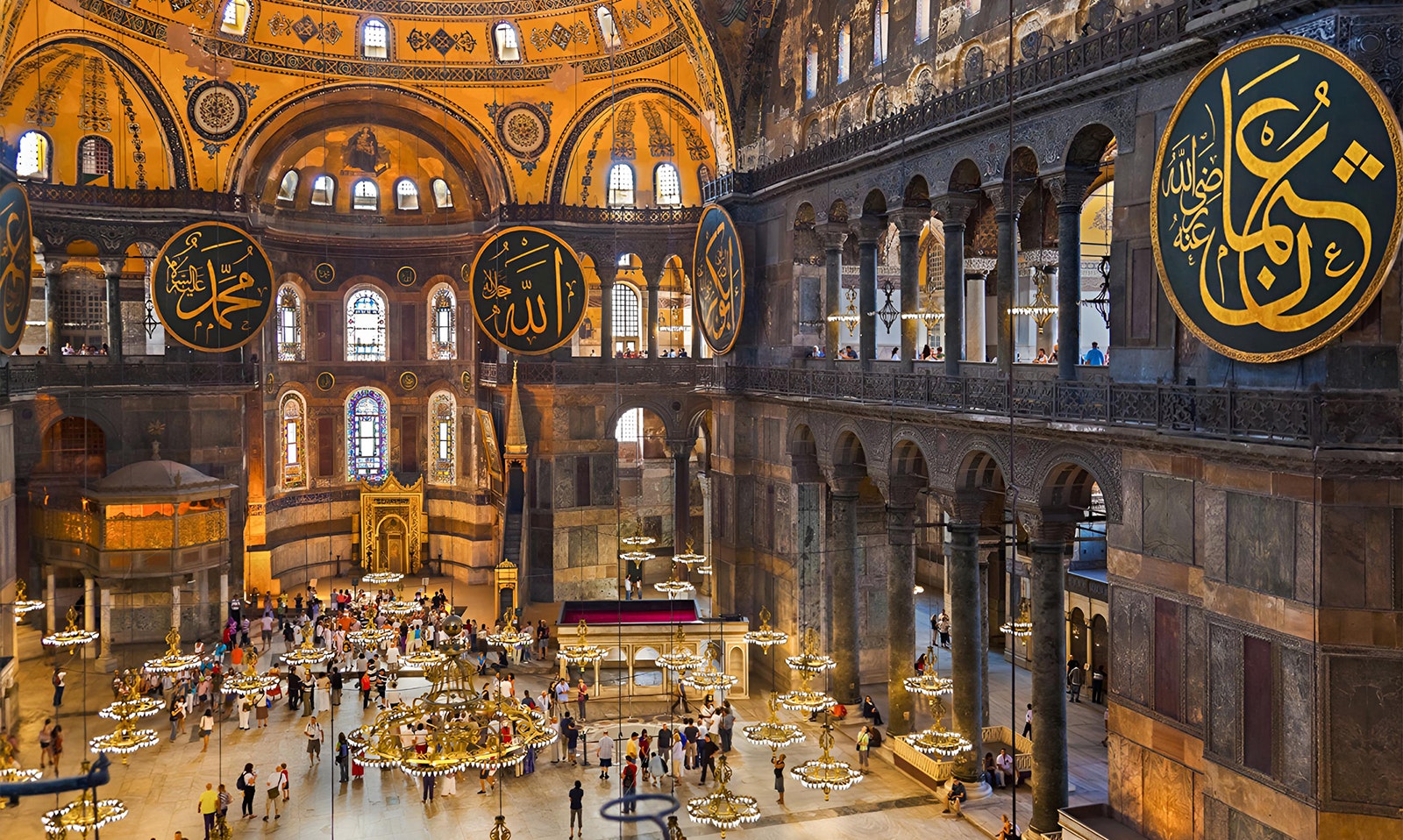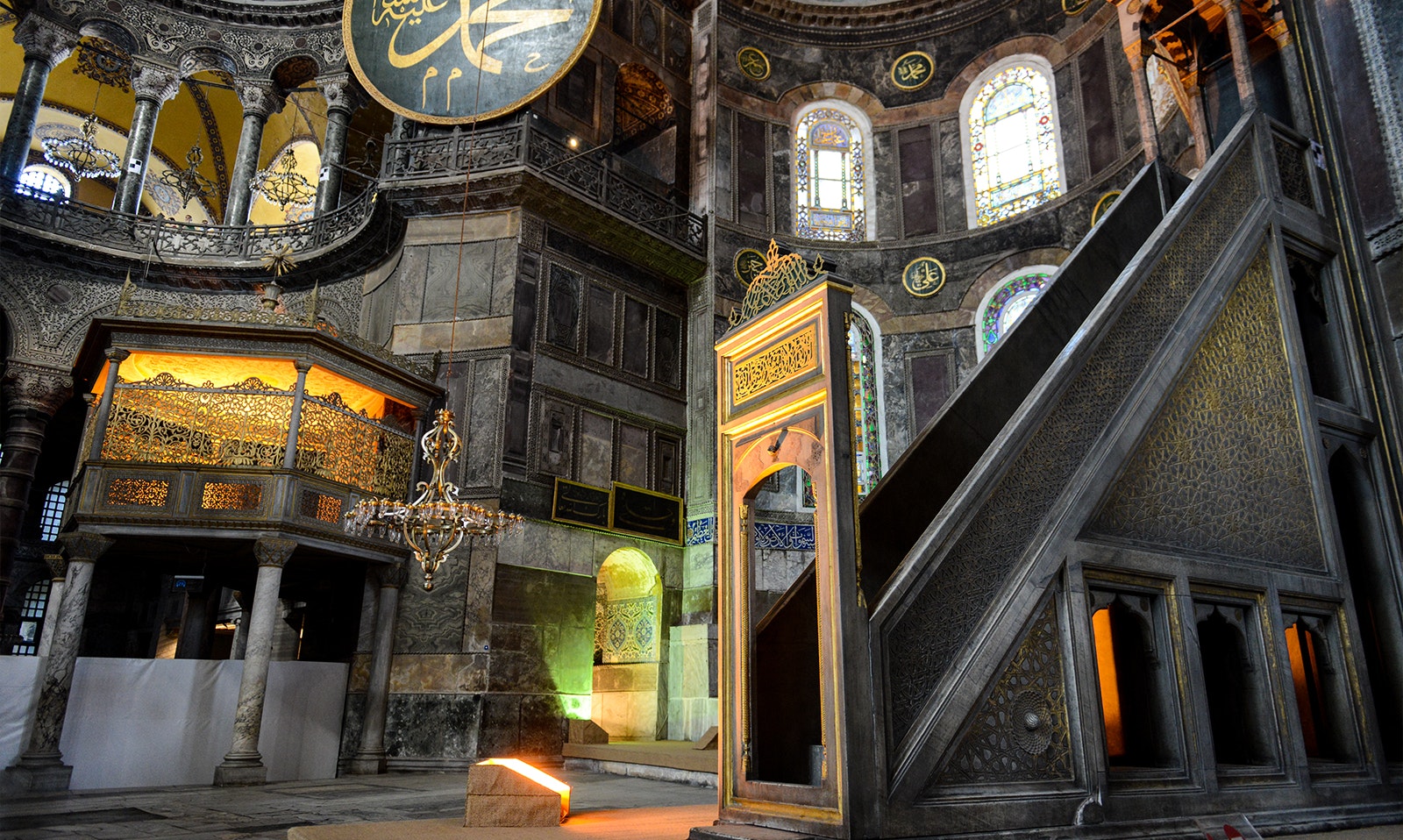Hagia Sophia in Istanbul is a blend of Byzantine and Ottoman styles. Originally a cathedral, then a mosque, it's now a museum known for its stunning architecture, particularly the domes. Visiting Hagia Sophia, the first thing to notice is the grand dome, striking both inside and out, and a key feature of the structure. It rests on four pendentives, allowing a circular dome atop a square base, each adorned with a seraph, an angel from Christian lore. The building's distinct shape comes from additional smaller domes stretching along its east and west sides.
With so much to see inside the Hagia Sophia, you’ll come across pieces of art that are particularly moving, such the Deesis Mosaic, showing Christ, Mary, and John the Baptist.
Let’s get into the Hagia Sophia, and go over the top things to see here!
Recommended Hagia Sophia tickets

The Grand Dome
The Grand Dome of Hagia Sophia stands out as a masterpiece of engineering. Its immense size and detailed decorations are stunning. Look overhead to see the Byzantine mosaics depicting scenes from the lives of Jesus, the Virgin Mary, and various saints.
The Emperor’s Door
The Emperor’s Door, located on the southern facade of Hagia Sophia, was a symbol of imperial power and divine right. This majestic entrance, reserved solely for the emperors, was a statement of their celestial mandate. The door's marble carvings and elaborate designs reflect the emperor's exalted status and the state's wealth.

The Imperial Lodge
The Imperial Lodge, positioned on the second floor of Hagia Sophia, provided a secluded vantage point for Byzantine emperors during religious ceremonies. This area offered the rulers a panoramic view of the grandeur below. The lodge's detailed craftsmanship and strategic location emphasize the fusion of political power and religious devotion, allowing the emperors to participate in the liturgy while maintaining a regal distance.
The Deesis Mosaic
The Deesis Mosaic, situated in the southern gallery, is a striking feature of Hagia Sophia. This masterpiece depicts a powerful intercessory moment with Christ at the center, flanked by the Virgin Mary and John the Baptist. The mosaic's fine details, expressive faces, and vibrant colors convey a deep sense of spirituality and artistic achievement, making it a focal point for both religious reverence and aesthetic admiration.

The Wishing Column
The Wishing Column, located on the northern side of Hagia Sophia, holds a place of mystery and wonder. Legend has it that this column has the power to grant wishes and heal ailments, drawing pilgrims and tourists alike. The small hole in the column, through which visitors insert their thumbs and make a wish, is said to be a conduit of divine power, and if the thumb emerges moist, the wish is believed to be granted.
The Mihrab
The Mihrab, an ornate semicircular niche in the apse of Hagia Sophia, points the way to Mecca, marking the direction of prayer for Muslims. This element was introduced following the conversion of Hagia Sophia into a mosque and exemplifies the synthesis of Byzantine and Islamic architectural elements. Its rich decorative scheme and artistic intricacy highlight the cultural and religious layering of the building, symbolizing a crossroads of civilizations.

The Minbar
Adjacent to the Mihrab is the Minbar, a pulpit from which Islamic sermons are delivered. This elevated platform is not only functional but also a work of art, showcasing the lavish craftsmanship of Ottoman artisans. The Minbar’s detailed carvings and ornamental patterns reflect the artistic heritage and religious significance of Hagia Sophia as a mosque, underscoring the building's role in the Islamic tradition.
Viking Inscription
The Viking inscription in the south gallery, bearing the phrase "Halvdan was here," connects Hagia Sophia to the broader tapestry of world history. Carved in the 9th century by a Norse mercenary, this inscription offers a tangible link to the Viking age and serves as a testament to the extensive reach of the Byzantine Empire, suggesting interactions across diverse cultures and geographies.
Devil's Prison
The legend of the Devil's Prison in Hagia Sophia adds a layer of intrigue to its historical narrative. According to lore, after the Ottoman conquest, a demon resisting the conversion of the structure into a mosque was imprisoned in marble by Akşemsettin. This story reflects the spiritual battles and historical transformations associated with Hagia Sophia, embodying the complex interplay of myth, religion, and history within its walls.


